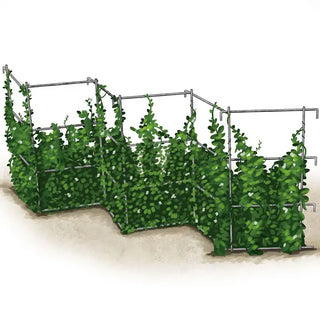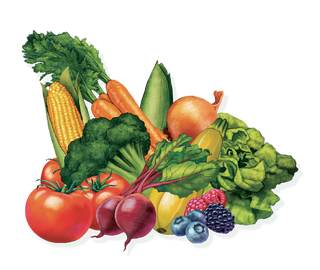One of the first vegetables to plant in the spring, peas are easy to grow, sweet and flavorful. At Gurney's, we're always on the lookout for the best snow pea seeds, snap pea seeds and shell pea seeds for home gardeners. We grow many pea varieties in our test gardens, and the pea seeds for sale represent the best varieties in terms of flavor, garden performance and yields.
Choosing the Right Pea Varieties
When choosing pea seeds for sale, you can choose between shell pea seeds, snow pea seeds and snap pea seeds. Shell peas, also called English or garden peas, are grown for the peas or seeds, not the pods. Snow pea are eaten for the pods and harvested when the pods are flat. Snap peas are a cross between the snow pea and the garden pea. Usually the pods and immature peas are eaten raw or sautéed.
When selecting pea varieties for your garden, keep in mind that most pea varieties grow tall and need a trellis or fence to support the vines. If you have a small space, choose a compact variety with small vines. Also, some pea plants are quite ornamental with colorful tendrils, blossoms and pods. If growing peas in the ornamental landscape, these pea varieties are a good Choice.
When to Grow Peas
Peas are well-suited to cool weather, flourishing in temperatures ranging from 55°F to 70°F (13°C to 21°C). The best time to plant peas varies by climate, but generally, they should be sown as soon as the soil is workable in early spring. In areas with mild winters, you can even plant them in late fall for an early spring harvest. For optimal growth, aim to plant peas about six to eight weeks before the last expected frost date in your region, ensuring they mature before the summer heat sets in.
Where to Grow Peas
Peas thrive in sunny spots with well-drained soil and perform best in soil with a pH between 6.0 and 7.5. Raised beds or garden plots with good air circulation and drainage are ideal for healthy growth. If space is limited, peas can also be grown in containers, provided the pots are deep enough--approximately 6 to 8 inches (15 to 20 cm)--to support their root systems. For optimal growth, ensure the plants receive at least six hours of direct sunlight each day.
How to Germinate Pea Seeds
Germinating pea seeds is relatively simple. Begin by soaking the seeds in water for 12 to 24 hours before planting, which softens the seed coat and accelerates germination. Once soaked, plant the seeds directly into the soil at a depth of 1 to 1.5 inches (2.5 to 4 cm). Space the seeds about 2 inches (5 cm) apart, with rows spaced approximately 18 inches (45 cm) apart. Lightly water the soil to keep it moist but not waterlogged, as too much moisture can lead to seed rot.
When to Start Pea Seeds Indoors
Starting pea seeds indoors is usually not necessary as they prefer cool weather and can be sown directly in the garden. However, if you live in an area with a short growing season, you might consider starting seeds indoors to get a head start. Begin the seeds about four to six weeks before your last expected frost date. To minimize root disturbance during transplanting, use biodegradable pots that can be planted directly into the soil.
For more information read our guide on starting vegetable seeds indoors.
Germination Time
Pea seeds usually germinate within 7 to 14 days, depending on soil temperature. Warmer soil speeds up germination, while cooler soil can slow it down. For quicker results, aim for soil temperatures between 65°F and 70°F (18°C to 21°C). Keep the soil consistently moist, but avoid overwatering to prevent sogginess.
Time to Maturity
Peas typically reach maturity in 60 to 70 days, though this can vary depending on the variety. Some early-maturing types can be ready to harvest in as few as 55 days, while others may take up to 80 days. Once the plants begin flowering, the pods will develop and mature rapidly. It's crucial to keep a close eye on the plants during this period, as peas left on the vine too long can become tough and starchy.
How to Harvest Peas
Peas are best harvested when the pods are full, with the peas inside having reached their maximum size but still tender. For snap and snow peas, pick the pods while they are still flat and the peas inside are just beginning to swell. Shelling peas should be harvested when the pods are plump and the peas are fully formed, but before they start to harden. When harvesting, use both hands--one to hold the vine and the other to gently pull off the pod-to avoid damaging the plant. Regular harvesting encourages the plant to produce more pods.
By following these guidelines, you can enjoy a bountiful pea harvest, providing fresh, home-grown peas for your meals.




















